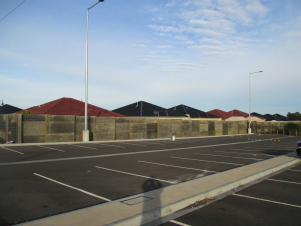Melbourne sprawling more than ever
19 Nov 2015
Despite supposed policies to control urban growth, Melbourne's urban sprawl continues, with land sales on the urban fringe reaching record highs of 1,900 lots per month.
The National Land Survey Program has been monitoring greenfield land sales since 2005. Their latest report on the Australian greenfield land market reports "Melbourne land sale volumes for the September survey hit a new record. Melbourne sold more land than the Perth and South East Queensland markets combined."
Melbourne's growth management is not working. We have a notional Urban Growth Boundary, but because there is no public management of land release within that boundary, rampant sprawl is continuing.
At $211,000, the average price of a lot on the urban fringe of Melbourne is less than half that of Sydney ($485,000). Even after the cost of building a house is accounted for, it is much cheaper to live on the urban fringe than buy in an established suburb where it is likely to be easier to walk, ride a bike, or use public transport. Melbourne needs effective growth management to promote development in and around activity centres and public transport, where people can walk for everyday tasks rather than being forced into their cars. Effective control of land supply would also encourage more efficient use of land in growth areas, with higher densities to facilitate walking.
As noted by the Committee for Melbourne, "these lots are generally being opened up in outer metropolitan areas where there is a lack of supporting infrastructure and access to jobs. This means many residents are commuting back to inner-city areas for work, on heavily congested road and rail corridors."
The State Government's new Plan Melbourne Refresh anticipates that 1.5 million additional houses will be required to 2051 - about 41,600 per annum. It also suggests only 30% of that growth should come from greenfield sites. This is a good policy, very similar to the growth proportions anticipated by the Melbourne 2030 policy, written in 2002. However, if the current rate continues more than half of new housing will be greenfield. Clearly, if the 30% target is to be achieved, the government will need to get serious about managing greenfield land supply.
The Plan Melbourne Refresh discussion paper flirts with the idea of actively managing supply, by controlling the release of Precinct Structure Plans (PSPs) that have not already been approved. However the paper then goes on to say:
"There are currently 217,320 lots in approved PSPs which is sufficient to satisfy current demand to at least 2030 and potentially longer. Any government action to control future land release is only likely to influence development patterns in the long term."
Clearly the sort of half-measures currently contemplated will not meet reasonable policy targets for the forseeable future. Melbourne needs genuine, effective public control of land release on the urban fringe now, not in fifteen years time.